Plot synopsis
Five orphans – Victor, Amelia, Vanity, Colin, and Quentin (see Names and identities below) – who have spent their lives in a luxurious but strict and secretive British boarding school (Saint Dymphna's School and College for Destitute Children), begin to discover that they are different from the other children that they so rarely see.
Unlike the village children, the five orphans do not age. They can also manipulate their appearances. Throughout the book, they also come to discover that they possess unique paranormal abilities. Victor can control the molecular arrangement of matter. Amelia is a fourth-dimensional being. Vanity can find secret passageways. Colin is a psychic. Quentin is a warlock.
The five also discover that the patrons of the school along with their guardians and teachers are just as human as they themselves, which is to say not at all. The story largely concerns the main characters' investigations and discoveries about an otherworldly power struggle, and their place within it.
Names and identities
Themes of naming and identity, both assumed and genuine, are important in the novel and the trilogy it opens. The five child-protagonists are first known only by simple Latin numerical designations; when they reach school age they are allowed to select names for themselves. ("Secunda," the narrator of the novels, chooses a name that expresses her admiration for Amelia Earhart and her fascination with exploration, geography, and travel.) Only in their teens do the five discover their true identities:
- "Primus," who calls himself Victor Invictus Triumph, learns that he is Damnameneus, one of the Telchines;
- "Secunda," Amelia Armstrong Windrose, is Phaethusa, daughter of the Titan Helios and the nymph Neaera of Myriagon;
- "Tertia," Vanity Bonfire Fair, is the Phaeacian princess Nausicaa, daughter of Alcinuous and Arete;
- "Quartinus," Colin Iblis mac FirBolg, is Prince Phobetor, son of Morpheus and Nepenthe, of Cimmeria;
- Quentin Nemo, is Eidotheus (or Eidotheia), son of Proteus and the Graeae.
Other characters in the novel participate in this pattern of multiple identities. Reginald Boggin, the headmaster of the children's school, is actually Boreas, the ancient Greek personification of the north wind. His staff is composed of a Thessalian witch, a cyclops, and similar exotic beings. The music teacher, Miss Daw, is Thelxiepia the siren. The caretaker, Mr. Glum is the human form of Grendel, the monster from Beowulf. Glum's talking dog is Lelaps, the hunting hound of Artemis.
Mythology and science fiction
Wright bases the cosmology of the novel firmly in the mythology of ancient Greece. Many of the gods are habitually referred to by obscure titles from their respective mythologies. "Lord Mavors," the children's principal antagonist, is Ares or Mars; "Lord Mulciber" is Vulcan. Most of the major deities of the Greek pantheon have roles in the novel and its successors. Many of the secondary figures like Boreas and Orpheus also appear. Decidedly minor personalities also pop up, like Laverna, Corus, and Pherespondus the satyr.
Wright structures his fictional world on the Greeks' primal creation myth, the rebellion of the Olympian gods against their progenitors, Saturn and the other Titans. The author combines this traditional mythology with science-fiction elements. In his cosmos, the Phaiacians are not merely the ancient people familiar from the Odyssey , but a race of otherworldly beings with remarkable abilities. The other four teenage protagonists each derive from a different order of non-human, pre-Olympian life, with their own strange natures and capacities. The Olympians regard them as monsters of Chaos. Wright blends mythological, classical, and Homeric elements with Science Fiction in surprising ways. For example, his Laestrygonians are Martians, while his Atlanteans sail in outer space vessels as well as in submarines below the oceans of the Earth.
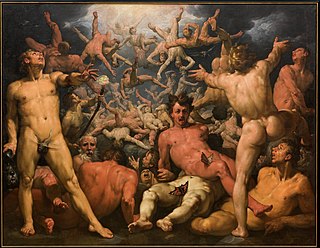
In Greek mythology, the Titans were the pre-Olympian gods. According to the Theogony of Hesiod, they were the twelve children of the primordial parents Uranus (Sky) and Gaia (Earth), with six male Titans—Oceanus, Coeus, Crius, Hyperion, Iapetus, and Cronus—and six female Titans, called the Titanides or Titanesses—Theia, Rhea, Themis, Mnemosyne, Phoebe, and Tethys. Cronus mated with his older sister Rhea, who then bore the first generation of Olympians: the six siblings Zeus, Hades, Poseidon, Hestia, Demeter, and Hera. Certain descendants of the Titans, such as Prometheus, Atlas, Helios, and Leto, are sometimes also called Titans.

John C. Wright is an American writer of science fiction and fantasy novels. He was a Nebula Award finalist for his fantasy novel Orphans of Chaos. Publishers Weekly said he "may be this fledgling century's most important new SF talent" when reviewing his debut novel, The Golden Age.

In ancient Greek religion and mythology, the twelve Olympians are the major deities of the Greek pantheon, commonly considered to be Zeus, Poseidon, Hera, Demeter, Aphrodite, Athena, Artemis, Apollo, Ares, Hephaestus, Hermes, and either Hestia or Dionysus. They were called Olympians because, according to tradition, they resided on Mount Olympus.
In Greek and Roman mythology, the primordial deities are the first generation of gods and goddesses. These deities represented the fundamental forces and physical foundations of the world and were generally not actively worshipped, as they, for the most part, were not given human characteristics; they were instead personifications of places or abstract concepts.
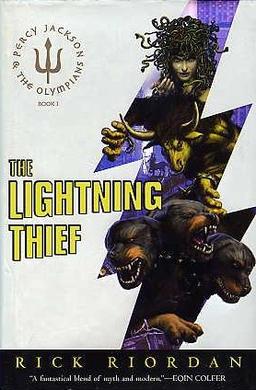
The Lightning Thief is a 2005 American fantasy-adventure novel based on Greek mythology, the first children's novel by Rick Riordan. The opening installment in the series Percy Jackson & the Olympians, the book was recognized among the year's best for children. Riordan followed the novel with various books and spin-off series, spawning the Camp Half-Blood Chronicles media franchise.
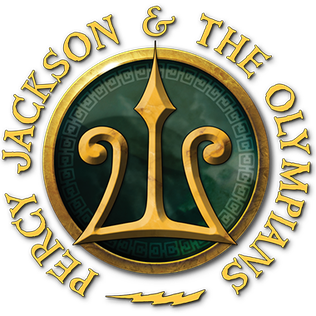
Percy Jackson & the Olympians is a series of fantasy novels written by American author Rick Riordan. The first book series in his Camp Half-Blood Chronicles, the novels are set in a world with the Greek gods in the 21st century. The series follows the protagonist Percy Jackson, a young demigod, who must prevent the Titans, led by Kronos, from destroying the world.
Persephone, the daughter of Zeus and Demeter in Greek mythology, appears in films, works of literature, and in popular culture, both as a goddess character and through the symbolic use of her name. She becomes the queen of the underworld through her abduction by Hades, the god of the underworld. The myth of her abduction represents her dual function as the as chthonic (underworld) and vegetation goddess: a personification of vegetation, which shoots forth in Spring and withdraws into the earth after harvest. Proserpina is the Roman equivalent.

The Titan's Curse is an American fantasy-adventure novel based on Greek mythology written by Rick Riordan. It was released on May 1, 2007, and is the third novel in the Percy Jackson & the Olympians series and the sequel to The Sea of Monsters. It is about the adventures of the 14-year-old demigod Percy Jackson as he and his friends go on a dangerous quest to rescue his 14-year-old demigod friend Annabeth Chase and the Greek goddess Artemis, who have both been kidnapped by the titans.

Richard Russell Riordan Jr. is an American author, best known for writing the Percy Jackson & the Olympians series. Riordan's books have been translated into forty-two languages and sold more than thirty million copies in the United States. 20th Century Fox adapted the first two books of his Percy Jackson series as part of a series of films in which Riordan was not involved. Riordan currently serves as a co-creator and executive producer on the television series adaption of the book series that was released on Disney+ in 2023. Riordan's books have also spawned other related media, such as graphic novels and short story collections.

The God Beneath the Sea is a children's novel based on Greek mythology, written by Leon Garfield and Edward Blishen, illustrated by Charles Keeping, and published by Longman in 1970. It was awarded the annual Carnegie Medal and commended for the companion Greenaway Medal (Keeping) by the British Library Association. Pantheon Books published a U.S. edition with illustrations by Zevi Blum in 1971.
Camp Half-Blood Chronicles is a media franchise created by author Rick Riordan, encompassing three five-part novel series, two short-story collections, two myth anthology books, a stand-alone short story, three crossover short stories, an essay collection, multiple guides, seven graphic novels, two films, a video game, a musical, and other media. Set in the modern world, it focuses on groups of demigod teenagers, and features many characters from Greek and Roman mythology. The first series, Percy Jackson & the Olympians, follows the adventures of a boy named Percy Jackson at a summer camp for Greek demigods. The second series, The Heroes of Olympus, introduces several more lead characters and a second camp for Roman demigods named Camp Jupiter. The third series, The Trials of Apollo, follows the now-mortal god Apollo, with appearances by many characters from the first and second series.
Mythic Warriors is a 1998-2000 anthology animated television series, which featured retellings of popular Greek myths that were altered so as to be appropriate for younger audiences, produced by Nelvana and Marathon Media. Two seasons of episodes were produced in February 8, 1998 and March 14, 1999; then aired as reruns until May 21, 2000, when CBS' abolition of its Nelvana-produced children's programming in favor of Nick Jr. and later, Nickelodeon content resulted in its cancellation. The series was based on the book series Myth Men Guardians of the Legend written in 1996 and 1997 by Laura Geringer and illustrated by Peter Bollinger.

The Battle of the Labyrinth is an American fantasy-adventure novel based on Greek mythology written by Rick Riordan. It is the fourth novel in the Percy Jackson & the Olympians series. The novel was first published in the United States on 6 May 2008 by Hyperion Books for Children, an imprint of Disney Publishing Worldwide. It has been published in hardcover, audiobook, ebook, and large-print editions. To date, The Battle of the Labyrinth has been translated into 29 languages from its original English.
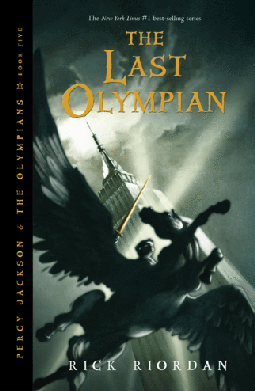
The Last Olympian is a fantasy-adventure novel based on Greek mythology by Rick Riordan, published on May 5, 2009. It is the fifth novel of the Percy Jackson & the Olympians series and serves as the direct sequel to The Battle of the Labyrinth. The Last Olympian revolves around the demigod Percy Jackson as he leads his friends in a last stand to protect Mount Olympus.

The Demigod Files is a collection of short stories by Rick Riordan published on February 10, 2009. It is a supplementary book to series Percy Jackson & the Olympians. It mainly contains three short stories, titled "Percy Jackson and the Stolen Chariot", "Percy Jackson and the Bronze Dragon", and "Percy Jackson and the Sword of Hades". It is set between the fourth and fifth novels, The Battle of the Labyrinth and The Last Olympian.
Ares has appeared frequently in modern popular culture; he usually appears as the ancient Greek god of war in the most generally familiar classical mythology.

Elements of Greek mythology appear many times in culture, including pop culture. The Greek myths spread beyond the Hellenistic world when adopted into the culture of ancient Rome, and Western cultural movements have frequently incorporated them ever since, particularly since the Renaissance. Mythological elements feature in Renaissance art and in English poems, as well as in film and in other literature, and in songs and commercials. Along with the Bible and the classics-saturated works of Shakespeare, the myths of Greece and Rome have been the major "touchstone" in Western culture for the past 500 years.

The mythological Greek deity Hades often appears in popular culture. In spite of his present neutrality and lack of bad deeds, he is often portrayed as a villain due to his association with death and the underworld.
Hephaestus makes many appearances in popular culture.
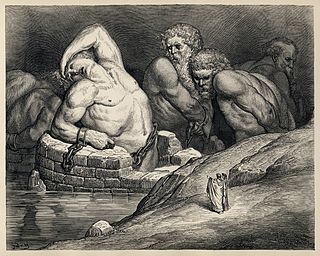
The familiar name and large size of the Titans have made them dramatic figures suited to market-oriented popular culture.














